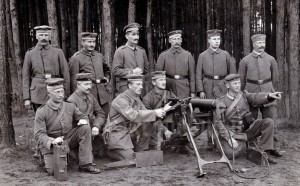 The German infantry in WWI were crafty.
The German infantry in WWI were crafty.
They’d sneak up to the British trenches in the heat of battle and shout, ‘RETREAT, RETREAT’.
Their voices were believable as many spent time in Britain before the war and could sound like a Tommy.
Call this an example of tactics.
It could win you a few yards of territory but it didn’t always win the battle.
For that you need strategy.
These days marketing companies are often focused on short-term gains. Immediate success is called for; impatience reigns.
Small wonder many CMOs become tactics oriented.
With this, agencies can be relegated to little more than order takers.
More’s the pity.
Because the smart agencies excel when it comes to strategic planning and finding opportunities others don’t see.
They have an ability to present your story in a way that makes it seem brand new.
They know how to avoid the deadening ordinariness of ideas that put no premium on interest or engagement.
They’re not wedded to checklists and they understand how to break the rules to gain attention.
You’ll see that in the Oreo Super Bowl Blackout Tweet. http://slate.me/1CmxTxZ
The smart agencies do more than create messaging to a marketer’s high level of satisfaction.
They concentrate on a high level of satisfaction for a brand’s customers and prospects.
Dove’s campaign for Real Beauty is a case in point. http://bit.ly/1c3lO3j
Equally, smart copywriters and art directors are in the boredom alleviation business.
They know brilliance is compulsory.
They’re past masters at putting emotions into people.
And they’re skilled in creating the moment someone buys.
You get that in Nike’s ‘Find Your Greatness’ work. http://bit.ly/1evMo7I
The point of all this?
Give your agency a seat at the table when it comes to strategy and content.
Get them to help your people unlearn dull thinking.
Let them head up the constant search for new ideas.
Treat them as a valued partner; empower them to excel on your behalf.
That way you can force your competition to do one thing.
Retreat.
Share with us. Leave your comment below. Thanks for reading Whybetonto.com. Regards, Steve Ulin LinkedIn: http://linkd.in/1Bey3Jl



